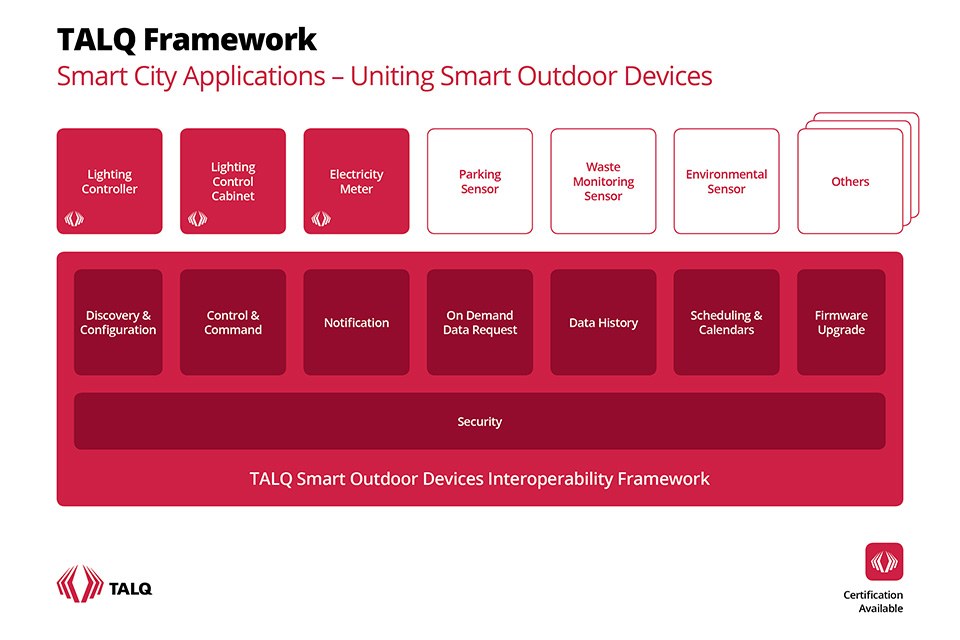TALQ Consortium Releases a New White Paper
The TALQ Consortium reveals in a White Paper published today many insights into its global interface standard and certification scheme for managing smart city applications including outdoor lighting networks. The document explains in detail not only the system architecture and data model, but also its functions and services. It helps cities, solution providers, project planners and other stakeholders understand the concepts and benefits of the Smart City Protocol. The full TALQ Specification Version 2.0 – allowing vendors to easily integrate the protocol in their systems - is available for TALQ member companies together with a powerful Test Suite.
Cities on their way to becoming smart cities want to invest in future-proof, interoperable solutions. As many of the currently available solutions are proprietary, the TALQ Consortium decided to develop the Smart City Protocol to unify multifarious smart city requirements including device commissioning, configuration, control, command, monitoring, scheduled programs as well as data collection. Thanks to this software protocol, cities will be able to choose from device networking solutions available from multiple vendors and control them all through a single Central Management Software (CMS) instance.
The TALQ Smart City Protocol offers several benefits: first of all a flexible data model that is applicable to a wide range of sectors and many different uses cases, such as outdoor lighting control, waste collection, parking space detection, environmental data collection, energy management and more. By integrating TALQ, vendors are free to describe their devices using TALQ functions that include a set of agreed configuration, operational and metering attributes and events. These functions can be easily configured, controlled, commanded and monitored by using TALQ services. The broad set of services does not only include data collection but also configuration, dynamic control programs and manual overrides, as well as an on-demand data read service, group management and firmware updates.
A second important benefit are the globally accepted principles on which the protocol is based: a RESTful approach makes it easy to integrate in both existing CMS and Gateways. To enable configuration, control, command and monitoring by any TALQ-compliant CMS, the Specification provides secure HTTP REST GET, PUT, POST, PATCH and DELETE requests and associated JSON data payloads.
Furthermore TALQ provides a comprehensive certification program and associated test tools to prove interoperability. This is not only invaluable for vendors during their implementation process, but gives end-customers, such as cities, the assurance that the selected solutions are truly compatible.
While the detailed TALQ Specification is available only for TALQ member companies, the White Paper can be found in the public domain of the TALQ website.
For more information visit www.talq-consortium.org
About the TALQ Consortium:
Founded in 2012, the TALQ Consortium is establishing a globally accepted standard for management software interfaces to control and monitor heterogeneous smart city applications. The TALQ Smart City Protocol is a specification for information exchange, suitable for implementation in various products and systems. This way interoperability between Central Management Software (CMS) and Outdoor Device Networks (ODN) from different vendors will be enabled, such that a single CMS can control different ODNs in different parts of a city or region.

